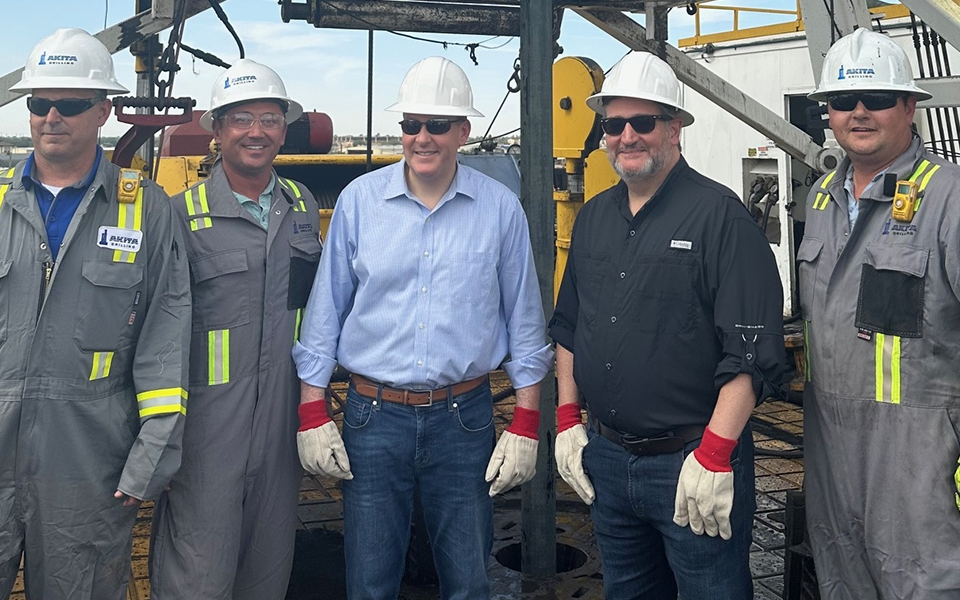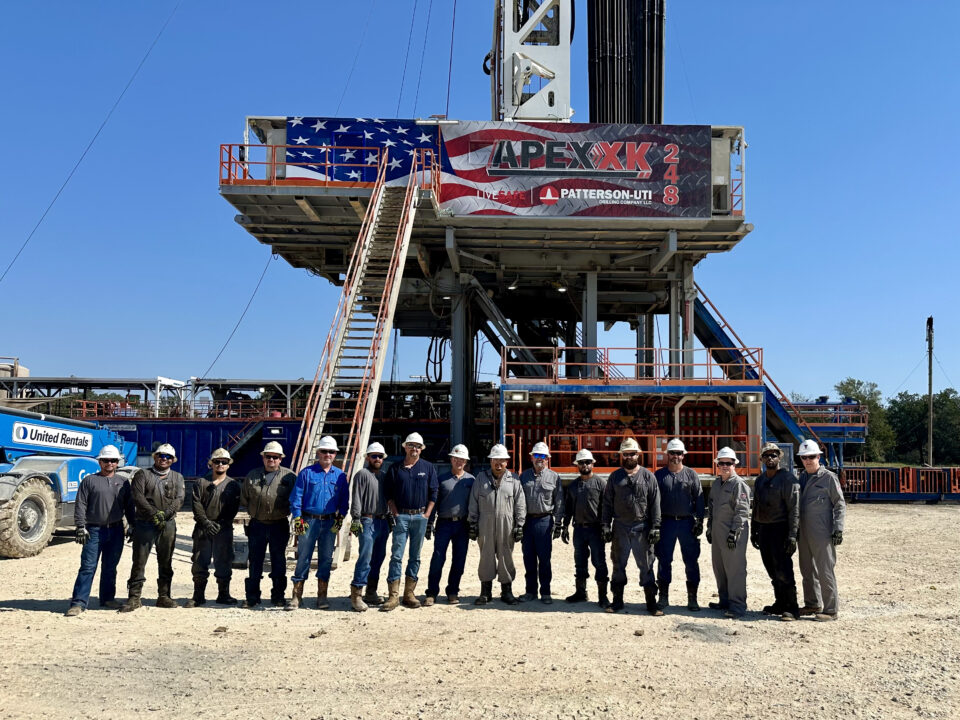Rigging Up/Down
Rigging Up/Down
Pre-job planning should be done to determine the safest and most efficient means to do the job. Once the rig move planning has been carried out, a pre-job meeting with all involved should be held. The following safety tips should be observed when rigging up/down a drilling rig.
- When determining the direction of setting up the rig, the prevailing wind direction should be considered so that substructure and engines can be set such that engine exhaust is carried away from the rig floor.
- Inspect all equipment that is to be used in the rig up operation. Especially inspect all rigging equipment (hoisting line, slings, chains, hooks and cables) before using. If the equipment appears worn or frayed, inform the driller/toolpusher (or truck pusher).
- While complete guarding is not possible at all times during rigging up/down, keep floor openings covered when not in use.
- Handrails around the rig floor should be put up first and taken down last when rigging up/down the rig floor.
- Stairs should be placed as soon as possible and taken down as late as possible. Once placed the stairs should be secured against movement.
- Be aware of the movement of trucks and other equipment around the rig location. All personnel should be instructed to be aware of the driver’s visual area so that they do not walk into a blind spot when the truck is moving.
- When placing a load that is close to another structure, do not get between the load being placed and the set in structure.
- Be sure walkways are free of skids and other items that may cause a slip/fall exposure.
- Fall protection should be used when workers are over 6 feet from the ground/deck such as while rigging up the derrick or substructure.
- Make sure that the lighting is adequate around the rig floor, derrick and work areas around the location (catwalk area, pipe racks, etc.)
- When rigging up the derrick, personnel should utilize fall protection and practice 100% tie off.
- Tong hanger line sheaves and other sheaves that are in the derrick should be inspected and replaced if necessary while the derrick sections are on the ground.
- Inspect the tong hanger cables, mud box and other cables that are located in the derrick before raising the derrick.
- Take care when rigging up tongs, etc., on the rig floor.
- Once the derrick is raised and pinned, the drawworks cover should be installed on the front of the drawworks.
- Organize and clean up the rig floor as soon as possible once it is rigged up.
- Winch truck/Crane operations:
- Never get between a load and the winch truck (crane).
- When placing the winch truck in position to tie onto a load, all personnel are to stay clear of the truck path and avoid placing themselves between the winch truck and load. Stay out of pinch points!
- At all times avoid working or walking beneath a suspended load.
- Lift the load a few inches to observe the balance and reset slings to balance the load.
- When signaling winch truck drivers, stay away from the truck but in the driver’s view. Do not stand in line with the ends of the block shafts.
- When loads are being lifted, the swamper should stand clear of the load line path and be clear of the direct line from the block shafts.
- Keep your hands off a load that is being lifted, lowering or positioned. Use a tag line when necessary to control the load.
- Keep clear of overhead power lines; clearance should be at least 10 feet from the winch truck poles or any object protruding or suspended from it.
- Hand signals should be discernible and consistent. Only one person should be designated as the signal person to the operator.
- Movement of the load should not occur until all personnel have moved out of the path of the load and the signal person is within sight of the driver.
- Oilfield winch trucks should not be used for raising or lowering personnel.
- No one should ride on the outside of trucks, cranes, or on loads, buckets or hooks suspended from gin poles.




